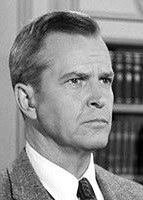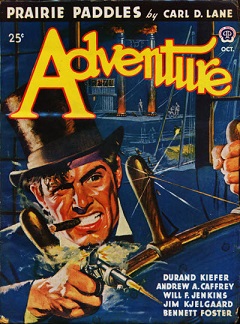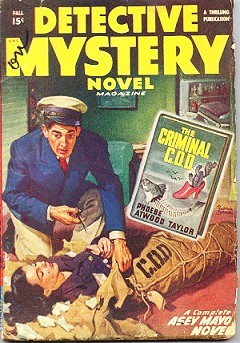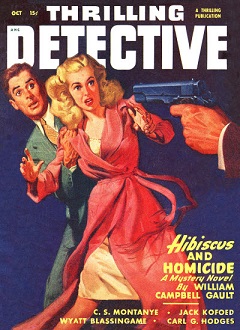
 Exploring the Unknown (1945-48) aired “Chain Reaction” on October 19, 1947. I could find little information about this program, some sites listing only 3 episodes, others 6, with only one supplying all 6 extant episodes available (at a small price) for the curious listener. The only other episode of the program we’ve run here came in December of 2022.
Exploring the Unknown (1945-48) aired “Chain Reaction” on October 19, 1947. I could find little information about this program, some sites listing only 3 episodes, others 6, with only one supplying all 6 extant episodes available (at a small price) for the curious listener. The only other episode of the program we’ve run here came in December of 2022.
What is known about this program is that it was billed and promoted as an educational science program, each episode examining a specific field of science or industry. One show dealt with how the scientific community tracks down the source of a smallpox epidemic, another has a newspaper reporter starving himself (under a doctor’s care) to discover the effects of hunger in post-WW II Europe. And yet another deals with mental health and the newest (at the time) medical treatments including electric shock therapy and removing part of the brain via lobotomy. This ghastly episode was titled “Dark Curtain” and was viscerally unsettling, and is perhaps the prime example of the over-the-top fictional dramatizations of state of the art science of the time, typical of how the show’s producers sought to make what many believed to be dry science come to life, thus maintaining listener engagement. This show pulls no punches and listeners should be aware of what they might be hearing, depending on the subject matter.

Alan Baxter (1908-1976, photo at left) stars in this episode. Along with the occasional radio role, beginning with his film debut in 1935, he appeared in over 60 films, two of note being Judgment at Nuremberg (1961) and Escape from the Planet of the Apes (1971). Starting in the 1960s he appeared on numerous television shows, including 4 episodes of Perry Mason, 3 episodes of The Virginian, with guest appearances on Cheyenne, Thriller, The Alfred Hitchcock Hour, The Outer Limits and others.
“Chain Reaction” takes place shortly after World War II, with much of the world beginning to rebuild and nuclear power being the new hot topic, its destructive power along with its potential peaceful applications being discussed and explored. An American engineer and nuclear expert is sent to France to check on the progress of a nuclear reactor being built by the French, but which is overseen by the Americans. The engineer notes in no uncertain language the slow progress of the reactor project, which should have been completed but is being slowed to a virtual standstill by political agitators working against any involvement by Americans in France’s business. France is at a crucial time of rebuilding after the war and in great need of coal and other means of energy, and investing time and money on the relatively new and untried nuclear option is not the direction some of a certain political stripe wish to go, and who are prepared to use violence to achieve their ends. How the American representative works through the problem to a solution is the crux of the story and is definitely worth a listen for the pro and con viewpoints addressed. What struck me immediately is the irony of France’s position (or rather some faction of the French as presented in this dramatization) then, and now, when it comes to nuclear power. For as far back as the early 1970s France has been a major proponent of nuclear energy with, by 2018, 71.67% of its total electricity needs being met by its over 50 nuclear reactors, making it the highest percentage in the world. So I found it interesting from an historical perspective to listen to this “educational science program” from 1947 which illuminated the view of some in France opposed to nuclear power for what they believed to be a valid reason. Take a listen and see what you think, given current viewpoints of nuclear energy use from environmental quarters around the world in the intervening 50+ years. Has it evolved or come full circle to the view represented in this radio play, or a mixture of both depending on the country and its circumstances? As in 1947 so now, as the paramount issue of energy and where and how to get or produce it is definitely food for thought and is one that will be forever with us.
Play Time: 29:12
{“Chain Reaction” aired on a Sunday evening which meant the neighborhood gang could be found at the nearby newsstand as quickly after school the next day as their legs could carry them. Knowing what they’d like when they saw it found them taking home the following pulps. Adventure (1910-1971) was begun in hopes of cashing in on the success of Argosy which was selling in the hundreds of thousands monthly. While Argosy‘s range of fiction was broad, Adventure narrowed its focus to adventure and thrills, which proved highly successful. SF fans will note the appearance of a familiar name on the cover of this issue, Will F. Jenkins (1896-1975), whose more well known SF pseudonym was Murray Leinster. Adventure was a monthly in 1947. Detective Mystery Novel magazine (1935-1951) began as a weird menace magazine under the title Thrilling Mystery, but as one reputable source observed, it began a gradual shift to more conventional fare and by 1945 had changed its name to the current title. Its first 3 issues of 1947 were as a bi-monthly, with its final two as a quarterly, ending the year with 5 issues. Thrilling Detective (1931-1953) was a well regarded detective pulp that ran for an amazing 213 issues, so must have been doing something right. It was a bi-monthly in 1947.}
[Left: Adventure, 10/47 – Center: Detective Mystery, Fall 1947 – Right: Thrilling Detective, 10/47]



To view the entire list of weekly Old Time Radio episodes at Tangent Online, click here.